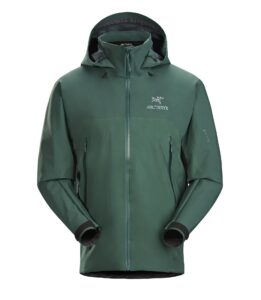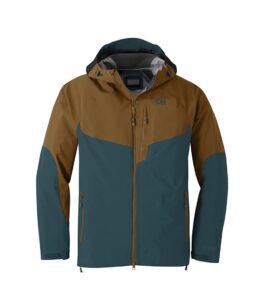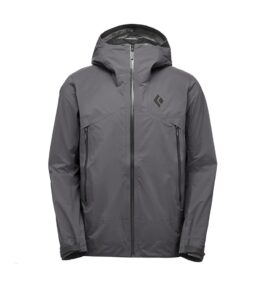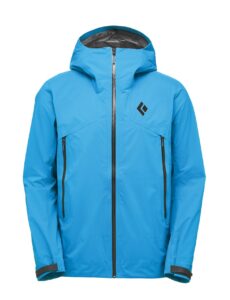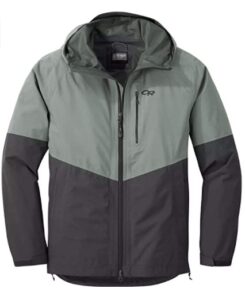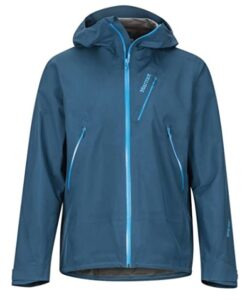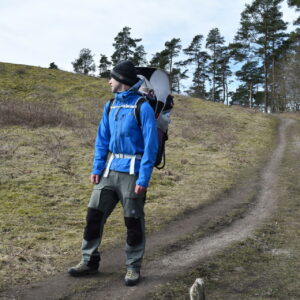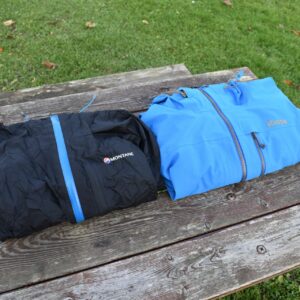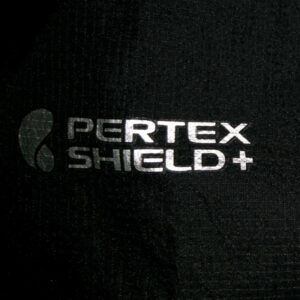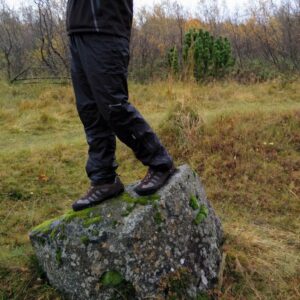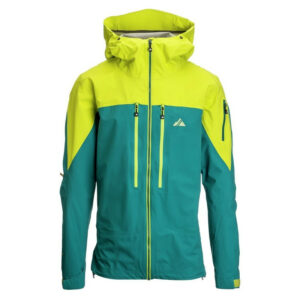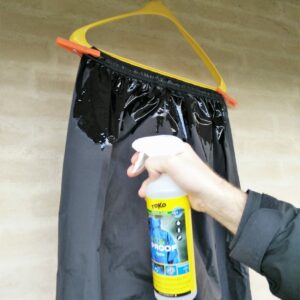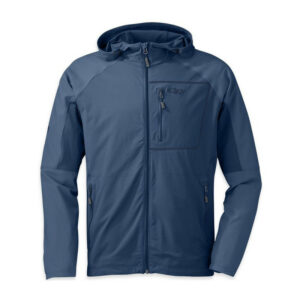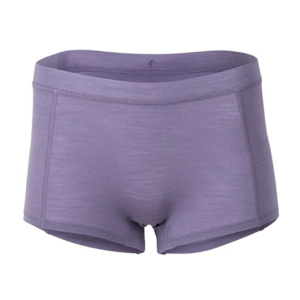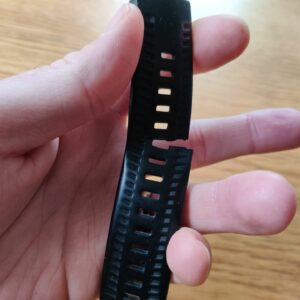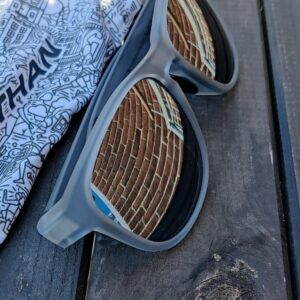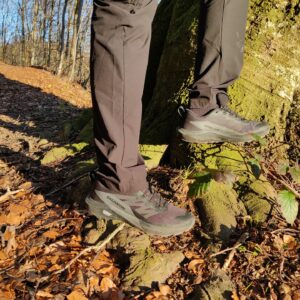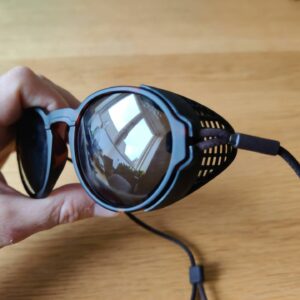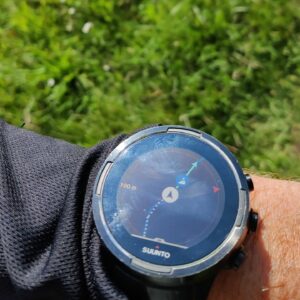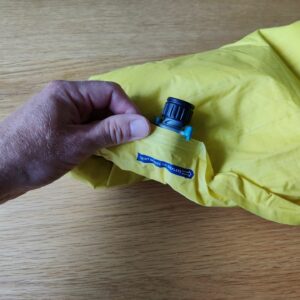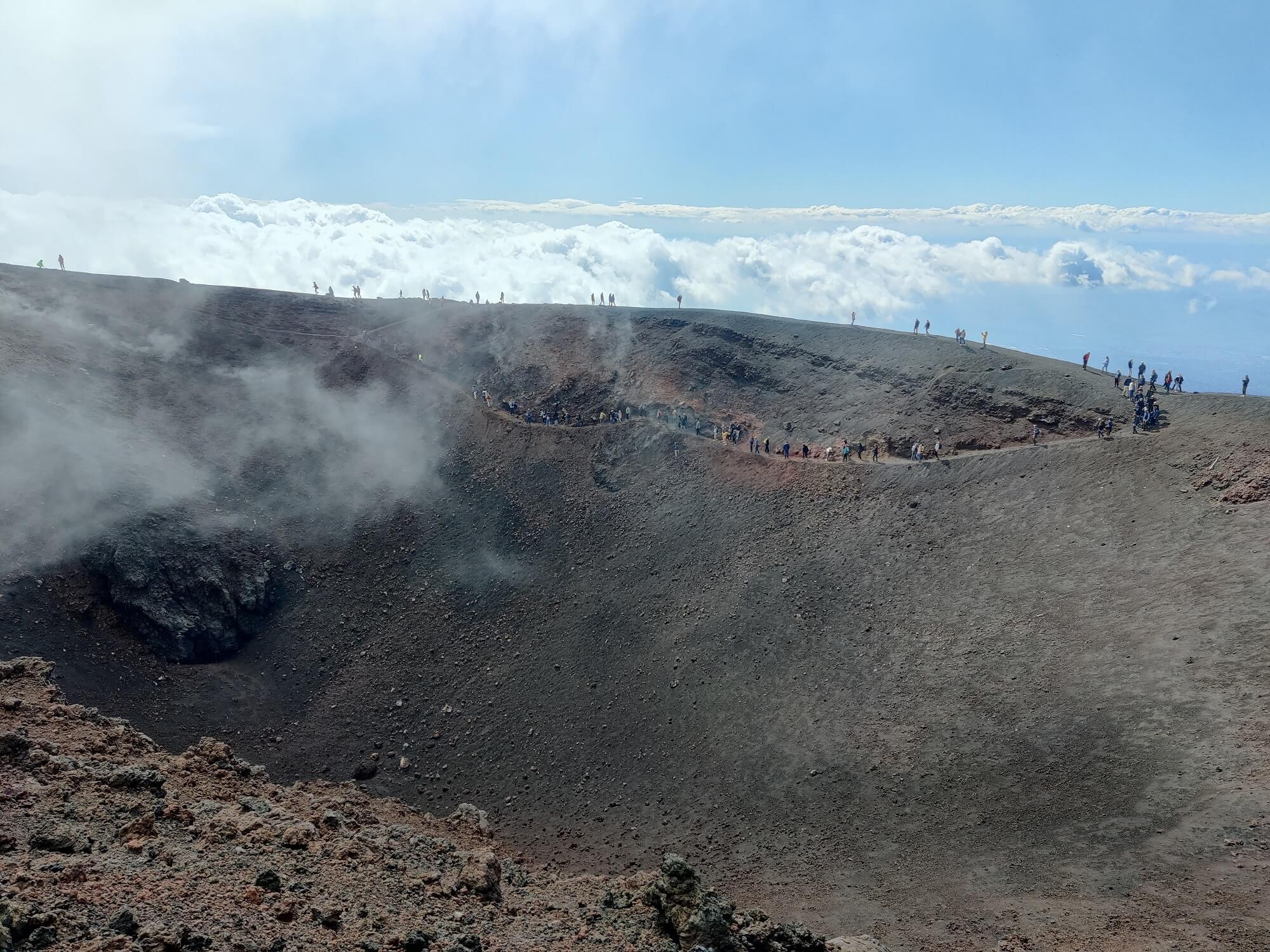For outdoor activities such as hiking, backpacking and mountaineering, it is good to have high-quality rainwear which protects you against the elements (rain, wind, snow etc.) and at the same time provides good breathability, so you don’t soak in your own sweat. Today there are many so-called waterproof/breathable fabrics available. Nevertheless, Gore-Tex remains the most popular one due to its good reputation.
Here we selected the best five Gore-Tex rain jackets. We only listed high-quality rain jackets which in addition to the qualities of Gore-Tex also provide good durability and functionality (freedom of movement, pockets, hood etc.). Note that not all Gore-Tex jackets use the same material as the Gore-Tex fabric is available in several different versions. The most popular versions for jackets are Gore-Tex, Gore-Tex Active, Gore-Tex Paclite and Gore-Tex Pro. In the following we’ll also explain the difference between these four types of Gore-Tex fabric. To see how Gore-Tex compares to other waterproof/breathable fabrics in terms of breathability and water resistance, see the chart in our article Rainwear: Hydrostatic Head and Breathability (MVTR).
Updated Content
We regularly update our reviews and selections to always recommend you the best products on the market.
Expert Selections
We only list top-tier products. Read how our selections of best hiking products differ from others here.
Links
We use affiliate links and may receive a small commission on purchases at no extra cost to you.
1. Our Gore-Tex Jacket Picks
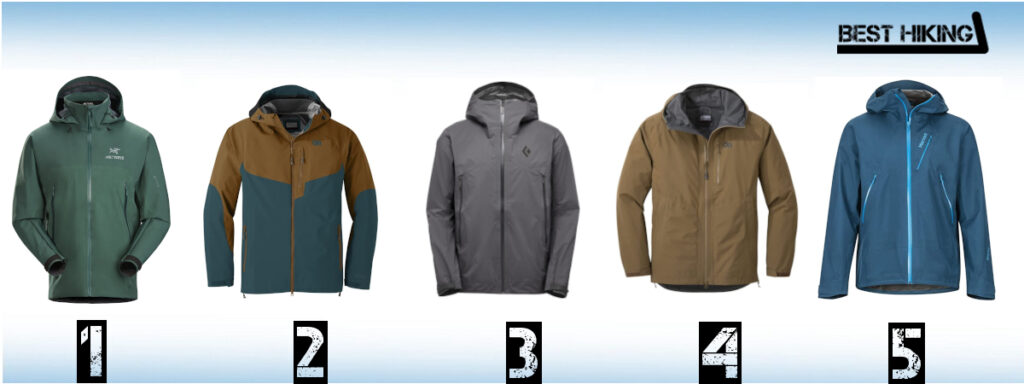
Best Gore-Tex Jackets for Hiking
- Arcteryx Beta AR
- Outdoor Research Hemispheres II
- Black Diamond Helio Active
- Outdoor Research Foray II
- Marmot Knife Edge
2. Comparison of Gore-Tex Jackets for Hiking
| Feature/Product | Arcteryx Beta AR | Outdoor Research Hemispheres | Black Diamond Helio Active | Outdoor Research Foray | Marmot Knife Edge |
|---|---|---|---|---|---|
| Weight | 16 oz. | 20.7 oz. | 12.8 oz. | 16.3 oz. | 11.5 oz. |
| Weight (Metric) | 455 g | 587 g | 363 g | 463 g | 326 g |
| Material | Gore-Tex Pro | Gore-Tex | Gore-Tex Active | Gore-Tex Paclite | Gore-Tex Paclite |
| External Pockets | 2 | 3 | 4 | 3 | 2 |
| Helmet-Compatible Hood | Yes | Yes | Yes | Yes | No |
3. The Selection
1. Arcteryx Beta AR
Suitable for:
- Hiking
- Trekking
- Mountaineering
- Backpacking
- Alpinism
- Ice climbing
The Arcteryx Beta AR jacket is due to its incredible performance very popular with mountaineers, backpackers and alpinists. The jacket is made of 3-layer Gore-Tex Pro fabric and thus it provides great breathability and waterproofness. The face fabric is made of 40-denier nylon and exposed areas are reinforced with 80-denier nylon. Therefore, the jacket is also very sturdy and durable. The Beta jacket has two zippered hand pockets which are climbing harness compatible and a helmet compatible DropHood with good adjustment options. It also features an adjustable hem and Velcro cuffs. This jacket is perfect for activities where you wear hardshell nonstop such as ice climbing, mountaineering and alpinism. The downsides are that it doesn’t pack as small as Paclite and Active products in this review and is heavier.
Women's Version: Available - Arcteryx Women's Beta AR
Note: Women's version might slightly differ from the men's version.
Pros:
- Durability
- Breathability
- Weather Protection
- Quality
Cons:
- Weight
- Size when packed
Video

2. Outdoor Research Hemispheres II
Suitable for:
- Hiking
- Trekking
- Mountaineering
- Alpinism
- Ice climbing
- Backpacking
- Ski touring
The Outdoor Research Hemispheres II jacket is made of Gore-Tex fabric and is primarily designed for ski touring. This jacket is a bit heavier than the jackets listed below. However, it is also much sturdier (70-denier face fabric) and provides better weather protection. The jacket utilizes stretch technology which enhances movement in key areas and makes the jacket more comfortable to wear. The Hemispheres II jacket has two zippered hand pockets and one zippered chest pockets. The hand pockets are positioned high, so they don’t interfere with a climbing harness or the hip belt of your backpack. The jacket also has large pit zips for extra ventilation (pit-to-hem). It features an adjustable helmet-compatible hood, adjustable wrist cuffs and adjustable hem.
Women's Version: Available - Outdoor Research Women's Hemispheres II
Note: Women's version might slightly differ from the men's version.
Pros:
- Durability
- Breathability
- Weather Protection
- Pit zips
- Stretch panels for freedom of movement
Cons:
- Weight
- Size when packed
Where to buy?
Also available at:
3. Black Diamond Helio Active
Suitable for:
- Hiking
- Trekking
- Backpacking
- Mountaineering
The Black Diamond Helio jacket is made of Gore-Tex Active fabric and is super light – it weighs merely 12 ounces. Lightweight construction and the breathability of Gore-Tex Active fabric make this jacket perfect for highly aerobic activities such as speed hiking and fast alpine ascents. The Black Diamond Helio jacket has an adjustable helmet-compatible hood, adjustable cuffs (Velcro) and an adjustable hem. It also has two large hand pockets which can be easily accessed even when you are wearing a climbing harness. The Helio jacket also features pit zips which provide extra ventilation during intense activities.
Women's Version: Available - Black Diamond Women's Helio Active
Note: Women's version might slightly differ from the men's version.
Pros:
- Weight
- Packs small
- Gore-Tex Active fabric provides excellent breathability
- Designed specifically for high-output activities
- Minimalistic design for weight savings
Cons:
- Less durable than some heavier-duty options
- Limited features
Where to buy?
Also available at:
4. Outdoor Research Foray II
Suitable for:
- Hiking
- Trekking
- Mountaineering
- Backpacking
- Cross-country skiing
The Outdoor Research Foray II jacket is made of Gore-Tex Paclite fabric and is primarily designed for hiking, backpacking and mountaineering. It is a bit heavier than competitive Paclite products but it also provides better durability because it uses more robust fabric. The jacket has a a helmet-compatible hood, three zippered pockets, elastic hem and adjustable wrist cuffs. The left-hand pocket doubles as a stuff sack for the jacket. The Outdoor Research Foray jacket II is available in several different colors and is a great option for those who are looking for an inexpensive Gore-Tex jacket.
Women's Version: Available - Outdoor Research Aspire II Jacket
Note: Women's version might slightly differ from the men's version.
Pros:
- Affordable
- Versatile for various outdoor activities
- Pit zips for additional ventilation
Cons:
- Weight (for Gore-Tex Paclite)
- Some complain over fit and style
Where to buy?
Also available at:
Video

5. Marmot Knife Edge
Suitable for:
- Hiking
- Trekking
- Backpacking
- Mountaineering
The Marmot Knife Edge jacket is a very lightweight rain jacket which is made of Gore-Tex Paclite fabric. The jacket is perfect for hiking, mountaineering and similar outdoor adventures. Nevertheless, due to its appealing look, it can also be worn for everyday use. The jacket has three zippered pockets, adjustable wrist cuffs and a drawcord hem. The two large pit zips for extra ventilation allow you to easily regulate your body temperature. The hood is adjustable but not helmet-compatible. The jacket is available in six different colors and is one of the least expensive jackets in this review.
Women's Version: Available - Marmot Women's Knife Edge
Note: Women's version might slightly differ from the men's version.
Pros:
- Gore-Tex Paclite fabric for a good balance between weight and weather protection
- Affordable
- Pit zips
- Lightweight and packable
Cons:
- Limited features compared to more technical jackets
- May not be as durable as jackets with heavier fabrics
4. Gore-Tex Jacket Buying Advice – What is important?
Type of Gore-Tex Fabric:
Gore-Tex fabric is available in four different versions – Gore-Tex, Gore-Tex Active, Gore-Tex Paclite and Gore-Tex Pro.
Gore-Tex:
The Gore-Tex fabric is the most versatile and can be used for almost everything, from around-the-town wear to hiking. It is less expensive than the Gore-Tex Pro but on the other hand it is also less breathable and heavier.
Gore-Tex Active:
The Gore-Tex Active fabric is very light and provides superb breathability. However, it doesn’t match the other types of Gore-Tex fabric when it comes to protection against the elements. The Gore-Tex Active fabric is designed for highly aerobic activities such as speed hiking, trail running, cycling and cross-country skiing.
Gore-Tex Paclite:
Gore-Tex Paclite is designed to be very packable and lightweight. A garment made of Gore-Tex Paclite material is thus a great option for a back-up hardshell – something you throw in the backpack and put on in case of rain or strong wind. Gore-Tex Paclite is not as breathable as Gore-Tex Active and feels stiffer. Nevertheless, it is also less pricy.
Gore-Tex Pro:
The Gore-Tex Pro fabric is the most advanced fabric from this iconic brand. It provides great breathability, durability and protection against the elements. However, jackets made of Gore-Tex Pro material tend to be very expensive. These jackets are primarily intended for alpinism, mountaineering and expeditions but can also be worn for other activities.
Hood:
Gore-Tex rain jackets typically have an adjustable hood for good fit. If you often do technical activities which require a climbing helmet, go for a jacket that has a helmet-compatible hood (in the comparison table above you can see which jackets offer this feature). All jackets in this review are equipped with adjustable hoods.
Pockets:
Because a rain jacket is worn as an outer layer, it is a great benefit if it has pockets for storing accessories. The pockets should be waterproof to keep your gear dry.
Taped Seams:
High-end jackets have taped seams which ensure that water doesn’t leak through them. All jackets in this review of the best Gore-Tex rain jackets naturally have taped seams. To learn more about taped seams, read the Trespass article What are Taped Seams.
Zippers:
High-end rain jackets have waterproof zippers (such as the YKK Aqua Guard zipper) which repel the water.
5. Questions and Answers
Are Gore-Tex jackets warm?
Gore-Tex jackets do not provide insulation/warmth. A Gore-Tex jacket is a shell garment which in simple terms means that it provides protection against wind, rain and snow. It is typically worn over the insulation layer (mid-layer) which is the layer providing warmth.
Are Gore-Tex jackets waterproof?
No so-called waterproof/breathable fabric is completely waterproof because there is always a tradeoff between waterproofness and breathability. Garments need to be breathable because otherwise you would soak in your own sweat due to your perspiration getting trapped.
Can you re-waterproof Gore-Tex?
Yes, you can apply DWR (Durable Water Repellant) to Gore-Tex garments. DWR ensures that the fabric repels the water rather than absorbs it.
Can you wash Gore-Tex jacket?
Most Gore-Tex jackets are machine washable. After washing, you should apply DWR because it will get washed off.
